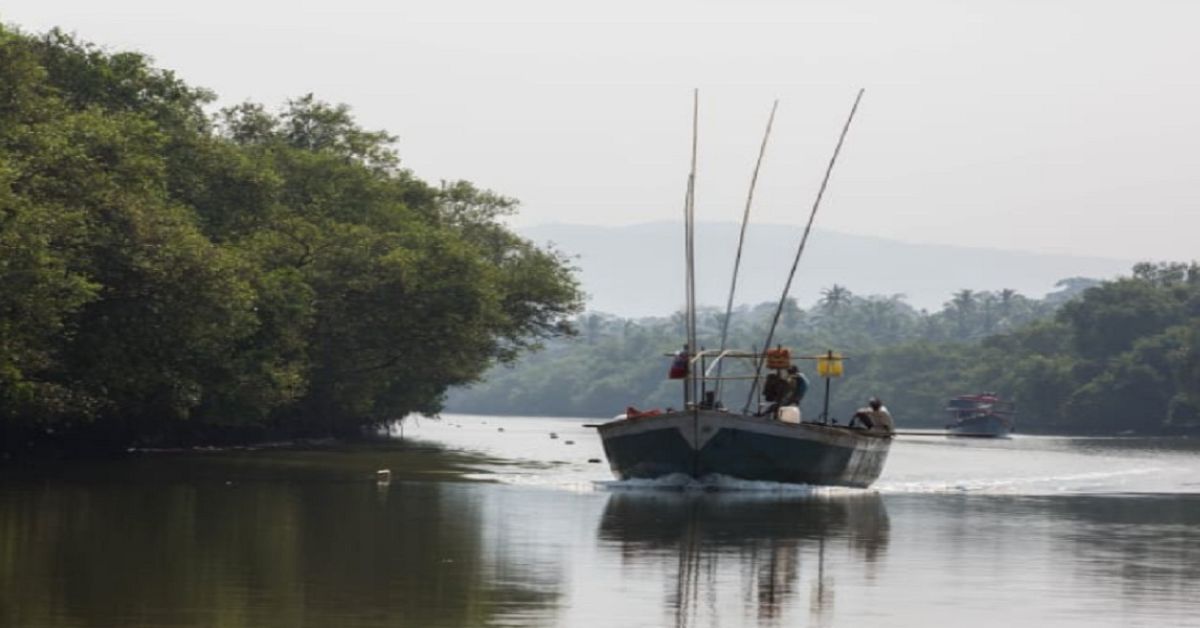In order to restore vessel line-of-sight and maneuverability, officials have approved the selective pruning of mangroves along the Cumbharjua canal, marking a significant boost to Panaji’s inland navigation network. The Cumbharjua length will be the main route for trade and transportation as the Aguada navigation channel is anticipated to close. The pruning has received conditional approval from coastal authorities, guaranteeing that natural mangrove systems and environmental protections will be maintained throughout the procedure.
A proposal to trim overgrown mangroves that are impeding navigational beacon visibility and impairing vessel maneuverability has received backing from relevant agencies in response to the increasing navigational issues along the Cumbharjua canal. The expansion of mangrove canopies has encroached upon crucial canal markers, posing a risk to inland vessels, according to a recent inspection conducted by coastal authorities, forest officials, and marine stakeholders.
With the closure of the Aguada channel, the Cumbharjua section, which is a part of a national waterway, is now being positioned as an important commerce route. The goal of the proposed pruning is to preserve the mangrove environment while ensuring the operational safety of inland navigation. Only selective pruning, concentrating on places that block beacons or navigation sightlines, will be allowed, officials stated. In order to maintain coastal biodiversity and improve interior water-based logistics and trade flow through Goa’s ancient backwaters, the focus is still on striking a balance between ecological protection and commercial transportation needs.
The coastal zone authority’s environmental clearance is subject to stringent requirements meant to avoid ecological disturbance. Pruning must be done without affecting the mangroves’ normal growth patterns, root systems, or geomorphological formations. Because these habitats are essential for fish reproduction, carbon absorption, and coastal protection, experts emphasized the significance of preserving them. The goal of the site-specific intervention model is to restrict trimming to the bare minimum required for visibility for navigation.
This approach follows similar best practices applied in other ecologically sensitive maritime zones across India and abroad. The initiative also signals a broader shift in policy—towards integrated management of natural ecosystems and commercial infrastructure. The pruning activity will be monitored by multiple departments, ensuring transparency and accountability during the process. Coastal authorities have urged vessel operators and local marine stakeholders to cooperate with the plan to ensure the smooth transition of trade routes through the newly prioritised canal.
Panaji’s decision to permit selective mangrove pruning marks a careful balancing act between ecological preservation and maritime efficiency. As the Cumbharjua canal becomes a focal point for inland navigation, ensuring visibility and safety is crucial. Authorities have demonstrated a commitment to maintaining biodiversity while facilitating the operational shift in trade routes. This development underscores the need for responsive, environmentally conscious infrastructure solutions in coastal regions. If implemented carefully, the initiative could serve as a model for similar challenges across India’s inland waterways, fostering both sustainable navigation and habitat protection in parallel.









